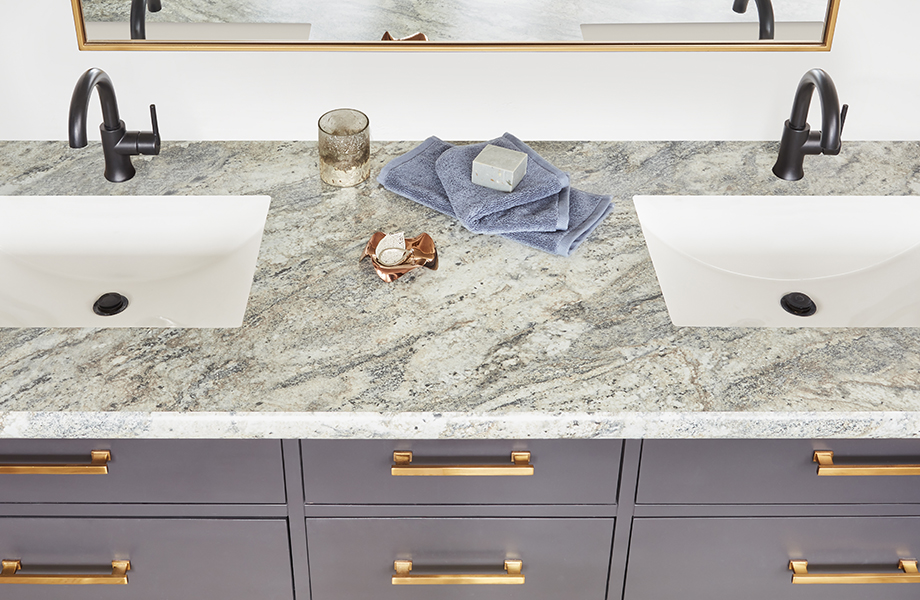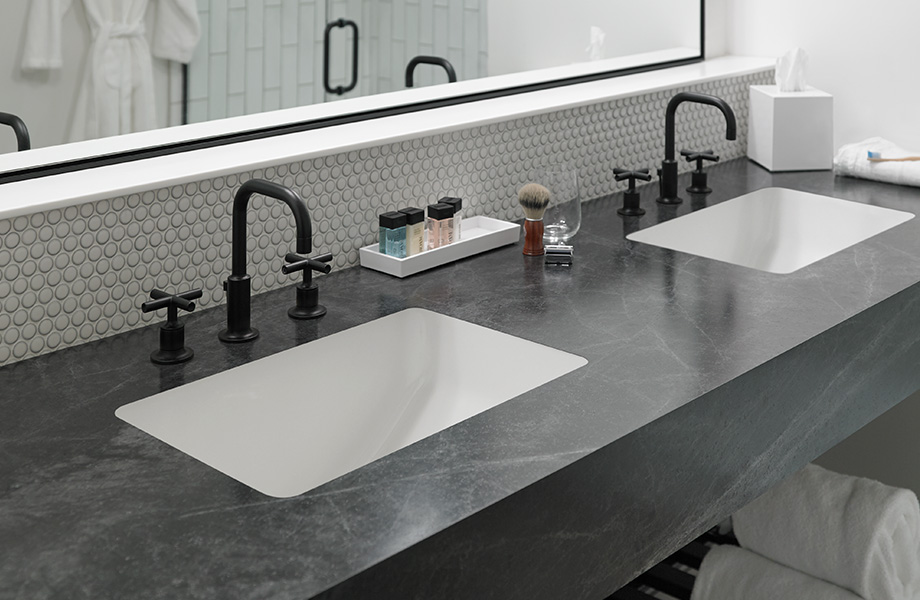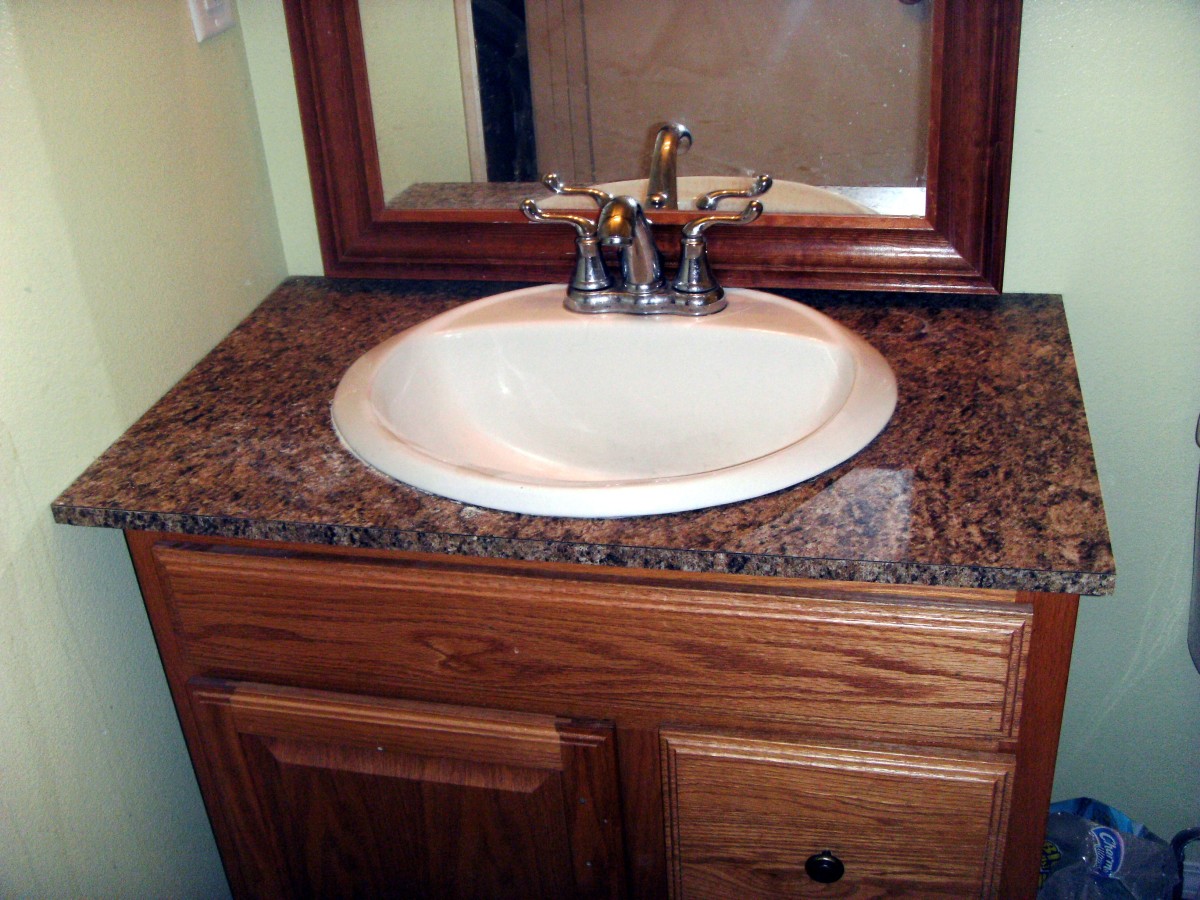When I first started renovating bathrooms, I was skeptical about laminate countertops. Many people told me they weren’t durable enough for bathroom environments, but after working with them for years, I’ve discovered they can be an excellent choice when selected and installed properly. Today’s laminate options are far superior to the basic varieties from decades past, offering impressive durability and style at a fraction of the cost of natural stone or solid surface materials.
Through countless bathroom projects, I’ve learned that laminate countertops can transform a space without breaking your budget. The key lies in understanding which products work best in humid environments and how to install them correctly. Modern manufacturing techniques have produced laminates that resist moisture, stains, and daily wear better than ever before, making them a practical solution for busy family bathrooms.
My experience has shown me that choosing the right laminate countertop requires careful consideration of several factors, including moisture resistance, edge treatments, and maintenance requirements. When these elements align properly, a laminate can provide years of reliable service while maintaining its appearance. The misconceptions about laminate being a “cheap” option often stem from poor product selection or installation mistakes that I’ve seen repeated in many homes.

Understanding Modern Laminate Construction and Technology
I’ve witnessed the evolution of laminate technology firsthand, and the improvements are remarkable. Today’s high-pressure laminates feature multiple layers, including a decorative paper layer, kraft paper core, and protective overlay that work together to create a surprisingly resilient surface. The manufacturing process involves pressing these layers under extreme pressure and heat, creating a bond that’s much stronger than traditional low-pressure alternatives.
The protective overlay layer has been a game-changer in my bathroom projects. This clear, wear-resistant surface protects the decorative layer underneath from scratches, stains, and moisture penetration. Higher-grade laminates feature thicker overlays that provide better protection, which is why I always recommend investing in quality when selecting laminate for bathroom applications. The difference in performance between budget and premium options becomes apparent within the first year of use.
Modern laminate surfaces also incorporate antimicrobial properties that help resist bacteria and mold growth, making them more suitable for bathroom environments. I’ve noticed that these treated surfaces maintain their cleanliness better and require less aggressive cleaning products. The texture options available today range from smooth finishes to realistic stone and wood grain patterns that add visual interest while providing subtle slip resistance around wet areas.

Moisture Resistance and Bathroom-Specific Considerations
Bathrooms present unique challenges that I always address when recommending laminate countertops. The primary concern is moisture exposure, particularly around sink areas and where the countertop meets the backsplash. I’ve learned that proper sealing at these junction points is critical for preventing water damage that can cause delamination or substrate swelling over time.
The substrate material beneath the laminate plays a crucial role in moisture resistance. I prefer using moisture-resistant MDF or particleboard specifically designed for bathroom applications rather than standard substrates. These specialized materials handle humidity better and provide a more stable foundation for the laminate surface. When combined with proper edge sealing and careful installation, this creates a system that can withstand typical bathroom conditions for many years.
Ventilation becomes even more important when using laminate countertops in bathrooms. I always ensure that bathroom exhaust fans are properly sized and used consistently to minimize humidity levels. Excessive moisture can still cause problems even with the best laminate products, so controlling the environment is part of my comprehensive approach to successful laminate installations in wet areas.

Installation Techniques for Maximum Durability
My installation approach for bathroom laminate countertops differs significantly from kitchen installations due to the moisture challenges. I start by ensuring the substrate is perfectly level and smooth, as any imperfections will telegraph through the laminate and create weak spots where water can penetrate. The adhesive selection is critical, I use only waterproof contact cement designed for high-moisture environments.
Edge treatment receives special attention in my bathroom installations. I prefer using laminate edge banding with rounded profiles rather than sharp edges, as these are less likely to lift from moisture exposure and provide better protection for the substrate underneath. The edge banding must be applied with the same waterproof adhesive and carefully rolled to ensure complete adhesion without air bubbles that could allow water infiltration.
Cutouts for sinks and fixtures require meticulous sealing to prevent moisture damage. I always seal cut edges with multiple coats of waterproof sealer before installing fixtures, and I use high-quality silicone caulk around all penetrations. The key is creating multiple barriers against moisture rather than relying on a single line of defense. This attention to detail has prevented countless callback issues in my installations.

Design Options and Aesthetic Considerations
The design possibilities with modern laminate have expanded dramatically since I started working with these materials. Manufacturers now offer patterns that convincingly mimic natural stone, wood, and even concrete textures. I’ve used granite-look laminates that fool most visitors until they touch the surface, and wood-grain patterns that add warmth to bathroom designs without the maintenance concerns of real wood.
Color selection plays a crucial role in bathroom design success. I’ve found that lighter colors help smaller bathrooms feel more spacious while hiding water spots and soap residue better than darker options. However, very light colors can show dirt more readily, so I often recommend mid-tone options that balance these competing factors. The key is selecting colors that complement your overall design scheme while considering practical maintenance requirements.
Texture options have become increasingly sophisticated, offering both aesthetic and functional benefits. Subtle textures can hide minor scratches and provide better grip around wet areas, while smooth surfaces are easier to clean and maintain. I typically recommend textured finishes for larger bathroom countertops and smooth finishes for powder rooms where space is limited and cleaning ease is prioritized.

Maintenance and Longevity Strategies
Proper maintenance has proven essential for maximizing the lifespan of laminate bathroom countertops in my experience. Daily cleaning with mild soap and water works best, avoiding abrasive cleaners that can damage the protective overlay. I teach my clients to wipe up water immediately, especially around sink areas where standing water can eventually find its way into seams and edges.
Monthly deep cleaning with specialized laminate cleaners helps maintain the surface appearance and removes soap scum buildup that can make countertops look dull. I’ve noticed that regular maintenance prevents the most common problems and keeps the laminate looking fresh for years. The key is establishing consistent cleaning habits rather than allowing problems to accumulate over time.
Preventive care focuses on protecting vulnerable areas from damage. I recommend using cutting boards, avoiding placing hot items directly on the surface, and checking caulk lines periodically for signs of wear. Small maintenance tasks performed regularly prevent major problems that could require countertop replacement. My clients who follow these guidelines typically enjoy trouble-free service for ten to fifteen years or more.

Cost-Effectiveness and Budget Planning
Budget considerations make laminate countertops attractive for many bathroom renovations I manage. The material cost represents only a fraction of what natural stone or engineered surfaces would cost, typically running between $10 to $40 per square foot installed compared to $50 to $150 for premium alternatives. This cost difference allows homeowners to allocate more budget toward other important bathroom improvements like plumbing fixtures or tile work.
Installation costs for laminate are generally lower than other countertop materials, but I emphasize that proper installation is crucial for long-term success. Cutting corners on installation to save money usually costs more in the long run due to premature failure and replacement needs. I recommend budgeting for professional installation, especially in bathroom applications where moisture protection is critical.
The long-term value proposition of quality laminate countertops has impressed me over the years. When properly selected and installed, they can provide fifteen to twenty years of service, making the cost per year quite reasonable. Factor in the lower maintenance costs compared to natural stone that requires periodic sealing, and laminate becomes even more cost-effective for budget-conscious homeowners who want attractive, functional bathroom surfaces.

Common Mistakes to Avoid
Through years of bathroom renovations, I’ve observed several recurring mistakes that can compromise laminate countertop performance. The most critical error is inadequate moisture protection during installation. Many installers skip proper edge sealing or use standard adhesives instead of waterproof formulations, leading to premature failure when water penetrates the substrate.
Choosing the wrong grade of laminate for bathroom applications ranks as another common mistake. Some homeowners select basic residential-grade laminates when commercial or high-pressure options would perform much better in humid environments. The small additional cost for better materials pays dividends in longevity and appearance retention over time.
Improper substrate selection has caused numerous problems in installations I’ve had to repair. Using standard particleboard or MDF without moisture resistance properties creates a weak foundation that will eventually fail in bathroom conditions. Additionally, many people neglect proper ventilation planning, allowing excessive humidity to build up and stress even quality laminate installations beyond their design limits.

How long do laminate countertops typically last in bathroom environments?
I’ve seen properly installed laminate countertops in bathrooms last anywhere from 15 to 25 years with regular maintenance. The key factors affecting longevity include the quality of materials selected, installation techniques used, and how well the surfaces are maintained over time. Higher-grade laminates with proper moisture barriers typically outlast budget options by several years, making the initial investment worthwhile for most homeowners.
Can laminate countertops handle typical bathroom moisture and humidity levels?
Modern laminate countertops handle bathroom moisture quite well when properly installed with appropriate edge sealing and waterproof adhesives. I’ve successfully installed hundreds in high-humidity bathrooms without moisture-related failures. The critical factor is using bathroom-grade materials and ensuring proper ventilation to prevent excessive humidity buildup that could stress any countertop material over time.

What’s the best way to clean and maintain laminate bathroom countertops?
I recommend daily cleaning with mild soap and warm water, immediately wiping up any standing water, especially around sink areas. For deeper cleaning, use specialized laminate cleaners monthly to remove soap scum and maintain surface appearance. Avoid abrasive cleaners, scouring pads, or harsh chemicals that can damage the protective overlay and compromise the surface integrity over time.
How do laminate countertops compare to other materials for bathroom use?
Laminate offers excellent value compared to natural stone or solid surface materials, costing significantly less while providing good durability and attractive appearance options. While not as heat or scratch-resistant as quartz or granite, laminate requires less maintenance than natural stone and offers more design flexibility than many alternatives at its price point, making it ideal for budget-conscious renovations.

Is professional installation necessary for bathroom laminate countertops?
I strongly recommend professional installation for bathroom applications due to the critical importance of proper moisture protection techniques. While kitchen laminate might be suitable for DIY installation, bathrooms require specialized knowledge of waterproofing methods, appropriate adhesives, and edge sealing techniques that most homeowners lack. The cost of professional installation is minimal compared to the potential water damage from improper installation.
What should I look for when selecting laminate for my bathroom countertop?
Focus on high-pressure laminates specifically rated for high-moisture environments rather than basic residential grades. Look for products with antimicrobial properties and thick protective overlays for better durability. Consider texture options that provide subtle slip resistance while remaining easy to clean. Most importantly, ensure your installer uses moisture-resistant substrates and waterproof adhesives designed for bathroom applications.

Related articles:
- Retro Laminate Countertops
- Laminate Countertops For Bathroom
- Black Marble Laminate Countertop
- Painting Kitchen Laminate Countertops
- Quartz Laminate Countertops
- Laminate Countertops Installation
- Laminate Countertop For Kitchen Island
- Kitchen Island Laminate Countertops
- Cheap Laminate Countertops
- Laminate Countertops That Look Like Stone